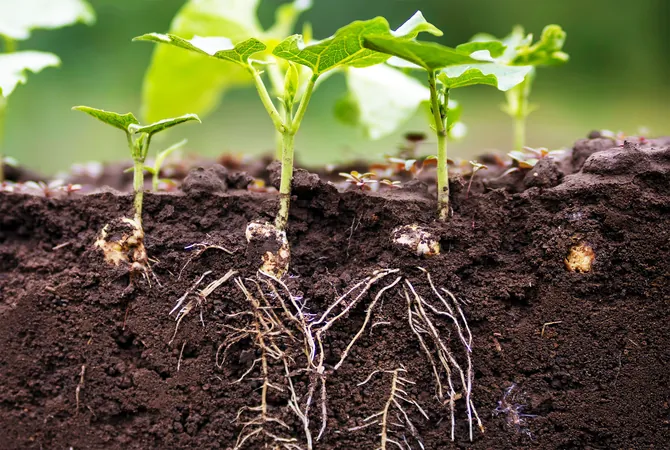
Unlocking Nature's Secrets: How Scientists Discovered the Key to Faster, Stronger Plant Growth
2025-05-16
Author: Ying
Every seed has one fundamental goal: to soak up water, gather nutrients, and stand tall. Below the earth, root tips are on a mission, branching out to ensure the plant's survival.
Timing is Everything in Plant Growth
In a world where extreme weather fluctuations are the norm, the ability to time root branch formation is more crucial than ever. A groundbreaking study reveals that this timing is influenced by autophagy, a cellular recycling process often linked to the health benefits of fasting.
Revealing the Clean-Up Crew
Researchers from the University of Copenhagen have tracked a dynamic protein through Arabidopsis roots, uncovering how short bursts of cellular clean-up allow new branches to sprout, enabling crops to endure harsher conditions.
Assistant Professor Eleazar Rodriguez, who spearheaded the research, explains the parallels: "Just as fasting triggers clean-up processes in humans, a similar mechanism is vital for plants, impacting their ability to grow roots that absorb water and nutrients efficiently."
The Role of ARF7 and NBR1
The key player in this clean-up operation is ARF7, a transcription factor that fluctuates in cycles closely linked to peaks in the growth hormone auxin. When autophagy declines, ARF7 builds up, disrupting communication and resulting in a chaotic growth rhythm.
Roots Pulse Like a Heartbeat
With measurements taken every four to six hours, the researchers found that auxin pulses signal regions of the root to prepare for branching. "Observing the movement of roots is akin to watching a snake slither towards water and nutrients, with the strongest pulse detected with each forward motion," Rodriguez adds.
What Happens When Autophagy Fails?
By disabling vital autophagy genes, the team observed fewer lateral roots and reduced water absorption in mutant seedlings. "When we impaired the plant’s clean-up process, it was littered with waste, and ARF7 got lost in the debris," Rodriguez reported.
Implications for Agriculture
These findings have significant implications. This shared recycling toolkit among flowering plants opens up new avenues for plant breeders and companies developing microbial soil additives to enhance crop resilience.
Technological advances in genetics could lead to crops with longer roots, making them more resistant to droughts and floods. Companies in Denmark are working on methods that encourage beneficial bacteria to alter plant growth patterns.
Harvesting the Future
By tuning autophagy or modifying the NBR1 tags, plants could dive deeper into the soil for moisture and capture nutrients that would otherwise wash away. More roots mean greater nutrient uptake, translating into healthier, faster-growing plants.
Taking a Step Forward
As plants play an essential role in our ecosystem—feeding us and providing the oxygen we breathe—understanding their growth mechanisms takes on unprecedented importance. Early pilot studies in Denmark show promise, with crops engineered for efficient recycling recovering more swiftly from rainfall extremes.
What Lies Ahead?
Future research will explore whether other auxin response factors utilize the same recycling pathways, as well as how environmental changes like light, temperature, or soil chemistry might influence growth rhythms. Insights from primitive species like mosses could unravel the historic connections between autophagy and plant development.
In short, a clean-up in root cells could lead to sturdier crop yields. As plants adapt to unpredictable climates, the potential for resilient agriculture looks bright.

 Brasil (PT)
Brasil (PT)
 Canada (EN)
Canada (EN)
 Chile (ES)
Chile (ES)
 Česko (CS)
Česko (CS)
 대한민국 (KO)
대한민국 (KO)
 España (ES)
España (ES)
 France (FR)
France (FR)
 Hong Kong (EN)
Hong Kong (EN)
 Italia (IT)
Italia (IT)
 日本 (JA)
日本 (JA)
 Magyarország (HU)
Magyarország (HU)
 Norge (NO)
Norge (NO)
 Polska (PL)
Polska (PL)
 Schweiz (DE)
Schweiz (DE)
 Singapore (EN)
Singapore (EN)
 Sverige (SV)
Sverige (SV)
 Suomi (FI)
Suomi (FI)
 Türkiye (TR)
Türkiye (TR)
 الإمارات العربية المتحدة (AR)
الإمارات العربية المتحدة (AR)